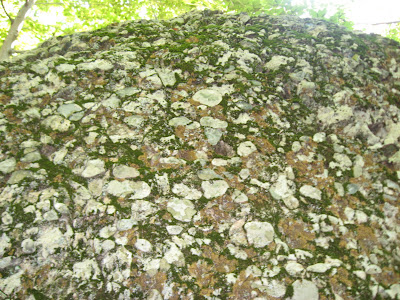That's really not much of a legend, and it probably came from the same Norseman fever that gave rise to wild stories about the Newport Tower. The island's real history is actually a lot more interesting than the legend.
The island was first used by local Indians for fishing, and was later deeded in 1632 to one Edward Rainsford, who used it as a farm.
I guess farming on a small rocky island didn't work out, and in the 1700s Rainsford Island was used to quarantine sick sailors arriving from other ports. The authorities didn't want them carrying disease into Boston, so they were put in a hospital on the island until they either recovered or died.
And apparently a lot of them died. The island has a large graveyard that may contain thousands of bodies. If there were any headstones they're long gone except for these four stone posts, which probably supported a chain around an important person's monument. We don't know who that important person was.
Rainsford was also used to quarantine Boston citizens who were ill with diseases like yellow fever. Citizens and sailors alike were housed in a large hospital nicknamed the Greek Temple because of its large columns.
Today, nothing remains of the hospital except a few foundation stones and possibly a stairwell.
However, the rocks near the shore below the hospital site are carved with several centuries of graffiti. The oldest seems to be from 1647! It was amazing to see the names and dates of people who were quarantined or worked here over the years.
After the quarantine hospital was shut down, the island was used as a reform school and a poorhouse. Today, there's nothing on the island except a few foundations, an old well and graffiti.


















